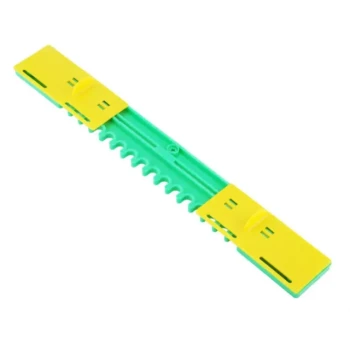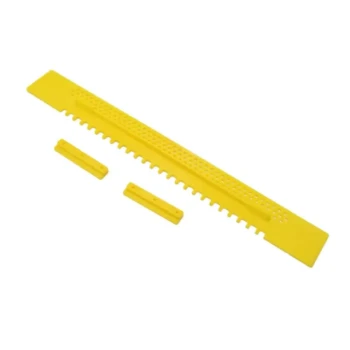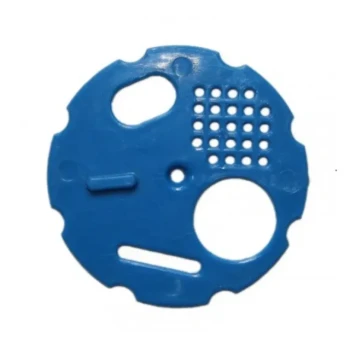Toggle Categories
Get Instant Support
Choose your preferred way to connect with our team
-
Get Free Quote Fill out form for detailed pricing
-
Send Email Detailed inquiry support
-
WhatsApp Quick mobile chat
Response Time
Within 8 hours on working days, 24 hours on holidays
Hive Entrance

Beehive Entrance Reducer Guardian Metal Hive Entrance for Bees
Item Number : E-1

Beehive Entrance Discs Plastic Bee Entrance Disc for Bee Hives
Item Number : E-3

Steel Round Disc Entrance Reducer for Flexzion Bee Hive Nuc Box Gate
Item Number : E-4

Multi-Functional Sliding Hive Entrance for Beekeeping
Item Number : E-7

Professional Reversible Beehive Hive Entrance
Item Number : E-9

Multi-Functional Rotary Hive Entrance Disc for Beekeeping
Item Number : E-8
REQUEST A QUOTE
Our professional team will reply to you within one business day. Please feel free to contact us!
Related Articles

Ground Truth: Why the Hive Stand Is the Most Underrated Asset in a Commercial Apiary
A hive stand isn't just a platform; it's a strategic tool for mitigating systemic risks like moisture and pests, protecting an apiary's long-term health and profitability.

Why Your Hives Are Failing: The Hidden Moisture Threat Your Hive Stand Might Be Ignoring
Discover the real reason for hive moisture and winter losses. Learn why common hive stands fail and how the right equipment boosts colony health and profitability.

Why Your Hive Stands Are More Than a Back-Saver—They're a Direct Investment in Profitability
Learn how the right hive stands go beyond ergonomics to reduce hive loss, cut labor costs, and directly boost the profitability of your commercial apiary.

The Calculus of the Swarm: How a Controlled Fracture Prevents a Catastrophic Split
A beehive's success creates its greatest risk: swarming. Learn how a nuc split works with bee biology to manage growth and prevent colony loss.

The Silent Killer in the Hive: Why Moisture, Not Cold, Is Winter's Greatest Threat
Winter kills bee colonies not through cold, but through moisture and starvation. Learn the critical balance of insulation and ventilation for hive survival.

Beyond the Apiary: The Beekeeping Veil as a Tool for Focus
The beekeeping hat is a personal screen room for your head, an essential tool for focus in any outdoor activity plagued by insects.

Optimizing Beehive Entrance Discs: When Freedom Boosts Hive Performance
Learn how optimizing beehive entrance discs boosts hive performance by enhancing foraging, ventilation, and security with seasonal adjustments.

Why Your Strongest Hives Swarm—And the Simple Swap That Prevents It
Frustrated by spring swarms cutting into your profits? Discover why hive congestion is the true cause and how a simple technique can boost colony strength and honey yield.

The Tipping Point: Managing the Psychology of a Beehive to Prevent Swarming
Swarm prevention is not about stopping bees, but about managing the psychological triggers of congestion and resource perception within the hive.

The Beekeeper's Dilemma: Choosing Between Wooden Frame Ideals and Plastic Frame Efficiency
The choice between wooden and plastic beehive frames is not just technical; it's a strategic decision balancing long-term hive health against operational efficiency.

How to Use Queen Excluders for Maximum Honey Yield Without Harming Bees
Learn science-backed strategies for using queen excluders to maximize honey yield while protecting bee health and colony productivity.

How to Choose the Best Beehive Type for Your Climate and Terrain
Learn how to choose the best beehive type for your climate and terrain, with insights on insulation, durability, and hive performance.

Why Wooden Beehive Frames Outperform Alternatives: Science, Sustainability, and Beekeeper Experiences
Discover why wooden beehive frames outperform plastic alternatives in sustainability, bee health, and cost-efficiency for modern beekeeping.

How to Optimize Queen Excluders for Healthier Bees and Better Honey Harvests
Learn science-backed strategies to optimize queen excluders for healthier bees and better honey harvests. Balance productivity and bee welfare.

Beeswax vs. Plastic Foundations: A Practical Guide for Beekeepers
Compare beeswax vs. plastic hive foundations for beekeeping: durability, bee behavior, cost, and sustainability factors explained.

How Propolis Protects Honey Bee Colonies: Antimicrobial Science & Beekeeping Applications
Discover how honey bees use propolis as a natural antimicrobial shield to protect their colonies, and learn beekeeping applications for healthier hives.

Plastic vs. Beeswax Foundations: What Beekeepers Need to Know for Sustainable Hives
Compare plastic vs. beeswax hive foundations for beekeeping: cost, durability, bee health & sustainability. Choose the best for your apiary's needs.

How to Strengthen Winter Bee Colonies: Science-Backed Strategies for Beekeepers
Science-backed strategies to strengthen winter bee colonies: nutrition, insulation, and pest control for higher survival rates.

How Oxalic Acid Vaporization Safely Controls Mites While Protecting Bees
Oxalic acid vaporization safely controls Varroa mites while protecting bees and honey quality. Learn sustainable mite management for apiaries.

Beekeeping Essentials: How to Choose and Use Supplies for Healthy Colonies
Essential beekeeping supplies guide: hive selection, protective gear, smoker tips, and common mistakes to avoid for healthy colonies.